"Through the latter part of the month, the whole country commenced a farmland shutdown, which affected a huge number of public footpaths and saw many popular railway photography vantage points labelled out of bounds."
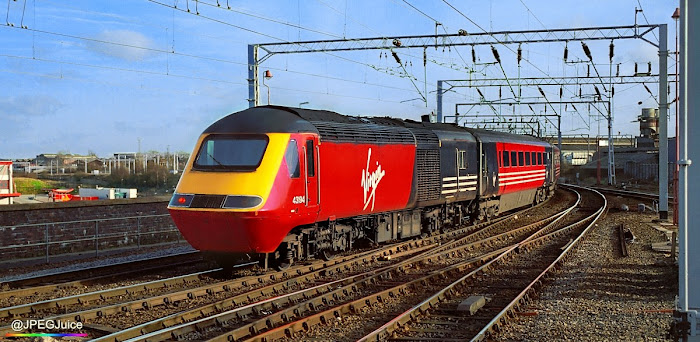
Virgin Trains 43194 at Wolverhampton.
If you keep a diary and you were a UK railway enthusiast at the beginning of the century, you may notice quite a downbeat tone across your February 2001 entries. For the first time, signs of the homogenised future heralded by privatisation were starting to show, and the horizon was far from golden.
With the Class 175s finally up and running, January 2001 had seen the last of the Class 37-hauled services between Birmingham and North Wales. Meanwhile, another looming threat to old stock became a reality on 8th Feb, when the first Pendolino - 390001 - left Alstom Washwood Heath behind 66087, for testing at Ashfordby. The following day, the final three EWS Class 31s were withdrawn from regular service at Old Oak Common. And the following week, engineering work between Exeter and Newton Abbot shut down services in the West Country.

The new face of First North Western - 'Barbie'-liveried Class 175 No. 175108 at the site of the former Albion station, Sandwell.
Rail photographers also had to contend with the foot and mouth crisis, which saw large stretches of public land and walkway closed off and inaccessible. And adding further gloom to traction fans' lives, the main backdrop to the month was the swift progress of Voyager testing. In a matter of mere weeks, this was expected to launch what would be the beginning of the end for widespread locomotive passenger haulage.
But even the biggest enthusiast woes were rendered trivial on the final day of the month, when a bizarre motoring accident left a Land Rover stranded on the ECML at Great Heck, causing a devastating, high-impact train crash between a Newcastle - Kings Cross express and an Immingham - Ferrybridge Freightliner. With ten fatalities, the disaster certainly set our petty modernisation gripes into context.
THE SCENE IN RETROSPECT
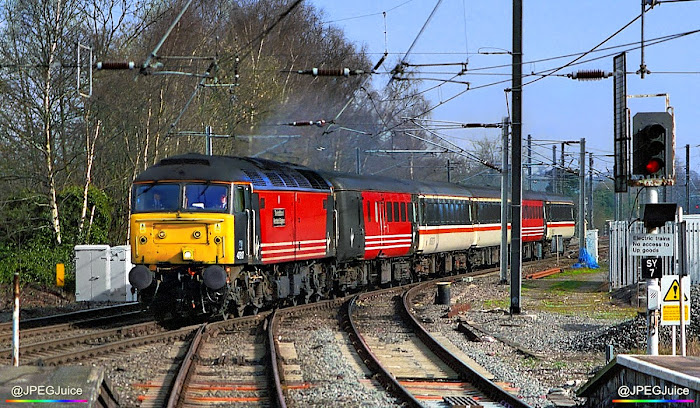
Although it seemed to the enthusiast that the good times were all but over, the West Midlands rail traffic of February 2001 looks rich in retrospect. You could still go to Paddington, Brighton, Bournemouth, Penzance, Preston, Newcastle or a range of other destinations behind a 47. You could still be shoved down to Euston by an 86, 87 or 90. New Street was still a hive of mail traffic activity at night. And EWS still harboured members of classes 37/0, 56 and 58.
In this post I'm going to present some of the sights from the month of February 2001, as recorded on 35mm film, on the West Midlands rail scene...

What a stalwart 37174 was for EWS, and British Rail before it. My memories of the loco date back to summer 1978 when it powered an advertised Birmingham to Bridlington excursion (my first Class 37 haulage), and spring 1979 when it worked the Euston 'drags'. It was a very early EWS repaint, but it temporarily received a dark grey version of the 'Ghost' livery because the red/gold design had not been developed when it was repainted.
After its update into EWS red, '174 regularly worked off Bescot. It also helped out with the Central Wales freight diversions in spring 2000, then went down for residency in Cornwall, where it derailed in the summer. It was, however, back in action in time to dep on passenger work for First North Western in December 2000. By winter 2001, it had returned to its life as the Bescot slogger, and it's seen above in the Virtual Quarry from the window of a 150 unit.
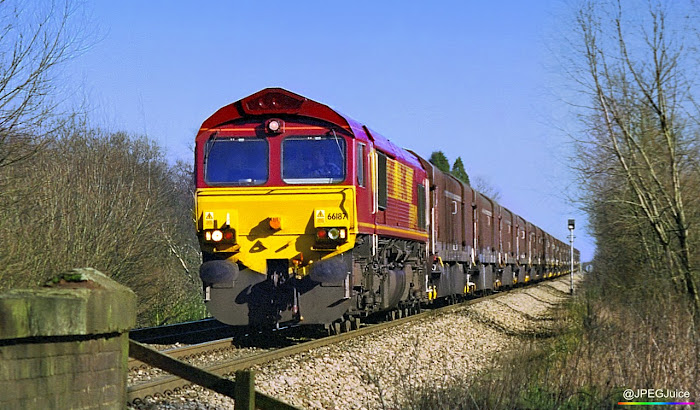
The Swindon to Longbridge motor parts trains had been switched over to EWS Class 66s a couple of years earlier. This made the trains a lot less interesting than they'd been when in the hands of double-headed 47s circa December 1998. But what we didn't know in 2001 was that just four years later, the massive Rover car plant at Longbridge would go into receivership, forcing the serving rail traffic itself into history. Above, 66187 descends the Lickey with the 10:33 Longbridge - Swindon empty KSA wagons on the 14th of the month. The cessation of these trains, with multiple runs in each direction per day, plus the shipping out of actual vehicles by rail, proved a very significant loss to the local freight scene.

Birmingham New Street was still heavily populated with locomotives. In the February of 2001 I photographed some of the station's evening traffic on a roll of Ilford Delta 400 Pro black and white film. This was before the rules tightened on photography due to the September 11 attacks, and it was still possible to hang around on the mail platforms without challenge. The locos featured above are 87033, 90033, and 67025 - the latter two allocated to postal duties. 90033 has brought in the Warrington - Bristol, and 67025 is taking it forward.

One of the overlooked elements of New Street's broad regime of locomotive activity was the need for on-site shunters - of the human variety, not the loco variety. Some New Street shunters, whose job it was to couple and uncouple the locos, were retained even after locomotive use had thinned to nearly nothing, and it was actually spring 2006 before a mate of mine was told his job was no longer viable. After many years shunting at New Street, he was transferred to Tyseley depot. Above, we see the old order of things at New Street, with 43155 City of Aberdeen in the foreground, and 87019 Sir Winston Churchill in the background - 24th February 2001.
FOOT AND MOUTH
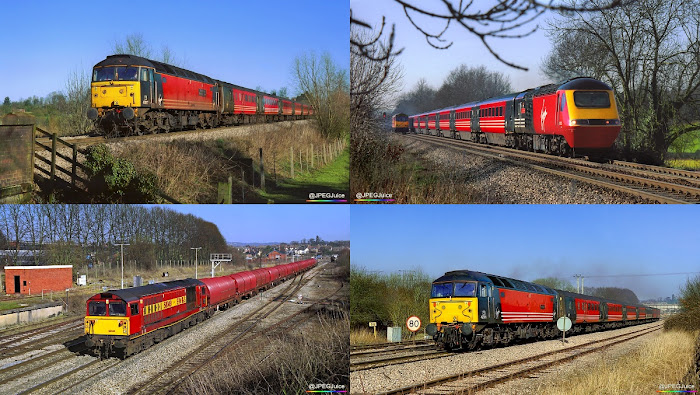
I compilation I posted recently on Twitter, showing the Lickey Incline and its environs on 14th February 2001. The two lower vantage points were rendered out of bounds by the foot and mouth restrictions.
Monday 19th February brought the news that a five mile exclusion zone had been enforced around an abbatoir in Essex, after the identification of a suspected case of foot and mouth disease. Through the latter part of the month, the whole country commenced a farmland shutdown, which affected a huge number of public footpaths and saw many popular railway photography vantage points labelled out of bounds. Aside from the obvious impact, the crisis also badly affected British tourism - especially since some land owners exploited the crisis to close off more access points than necessary. On 5th May the tourist industry pleaded with the public to begin visiting rambling sites again. But the call was premature, since a lot of access had still not been restored, and tourist confidence plummeted further.
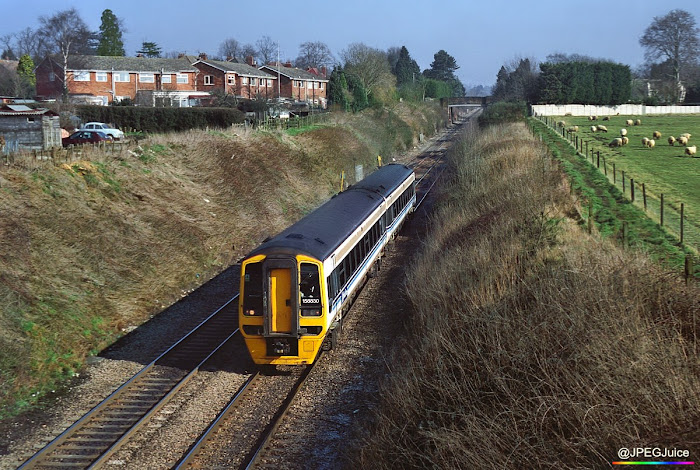
Inaccessible bridges early in the crisis included 'Bankers Bridge' south of Bromsgrove. The nearest alternative was St Godwalds Road, immediately north of Bromsgrove station, and that was where I ended up taking the above photo of Regional Railways Express liveried 158830. When I look at this shot, I always remember the foot and mouth crisis, and wonder if those sheep survived the disease and precautionary culls.
NEW MEETS OLD
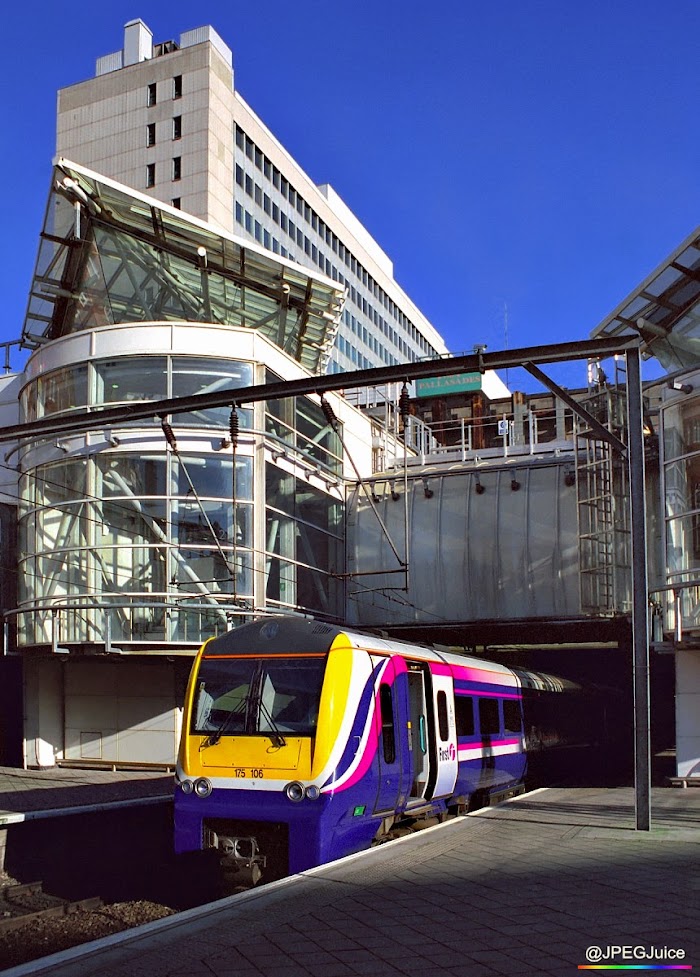
A train that had still been staunchly entrusted to Class 37/4s and steam-era coaching stock the previous year. This is the new-look 14:23 Birmingham - Holyhead on 9th February 2001, with 175106 exuding modernity at New Street. Although the Class 175s were in squadron service by this time, they couldn't cover all diagrams into Birmingham, and the next time I visited New Street this particular service was a 156 unit.

Freightliner found itself in a transitional phase, in which diesel power exhibited a mix of classes 66, 57 and 47. In this shot at Tame Bridge Parkway on 21st February, the Coatbridge - Southampton has a monster load, which requires the efforts of 47376 Freightliner 1995 and 47295. The month's weather had been unusually good, if cold, but on this particular date it was generally cloudy - the kind of conditions that in the days of film would usually prompt a switch to black and white.

After working the Toton - Round Oak on 14th February (see Lickey bank compilation further up), 58049 almost inevitably ended up getting collared for the Wolverhampton - Hoo Junction run for at least the next couple of days. It seemed any 58 that dared venture into the West Midlands would find itself shuttling back and forth between Wolves and Hoo for as long as the drivers would put up with it. This is 58049's second consecutive day on the duty - 16th February 2001.
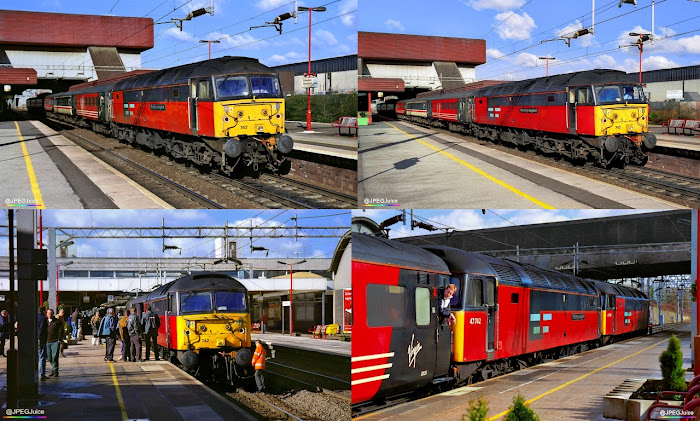
On Saturday 24th February 2001, the 09:17 Manchester - Paddington was inherently worthy of attention, since it was entrusted to surviving Res liveried ILRA 47/7 - 47742 The Enterprising Scot. However, upon reaching Coventry the attention-worthiness escalated dramatically as '742 threw a tantrum and the Rugby Thunderbird was summoned to get the train to London.

Although 47762 was no stranger to Thunderbird duty, as an EWS (as opposed to Virgin) machine it was a much rarer haulage than 47742, and an assembly of interested parties quickly gathered as the Thunderbird made its way up from Rugby. Until May 2000, Rugby had only held a diesel Thunderbird, but by 2001 there was also an electric loco held there on standby. The use of 47762 therefore didn't leave Rugby without local cover. Other WCML strategic Thunderbird sites at this time included Wembley, Willesden, Carnforth and Polmadie. All typically manned by former Res 47/7s.

You've got hawk-eyes if you can spot the train in this shot, but there is one. Hard as it is to believe, this is actually the site of the Bull Ring Centre, Birmingham, on 9th February 2001. The old complex has just concluded its demolition phase, and the site is at max chaos. We're next to the Rotunda, and we're able to see right across to the line out of Moor Street and a departing Class 150/0 over the viaduct arches. The old Moor Street station is still in its run down state and just visible in the distance on the left.

Trains through Moor Street comprised Centro Class 150s on the short distance runs, with Classes 165 and 168 heading down to London. The scene above, featuring Chiltern 168005 as the main subject, was very typical.

And just across town at Snow Hill, at around 14:30 on 9th February, we get a better look at the Centro livery on 150019. This livery covered the entire Central Trains Class 150 stock at the time.
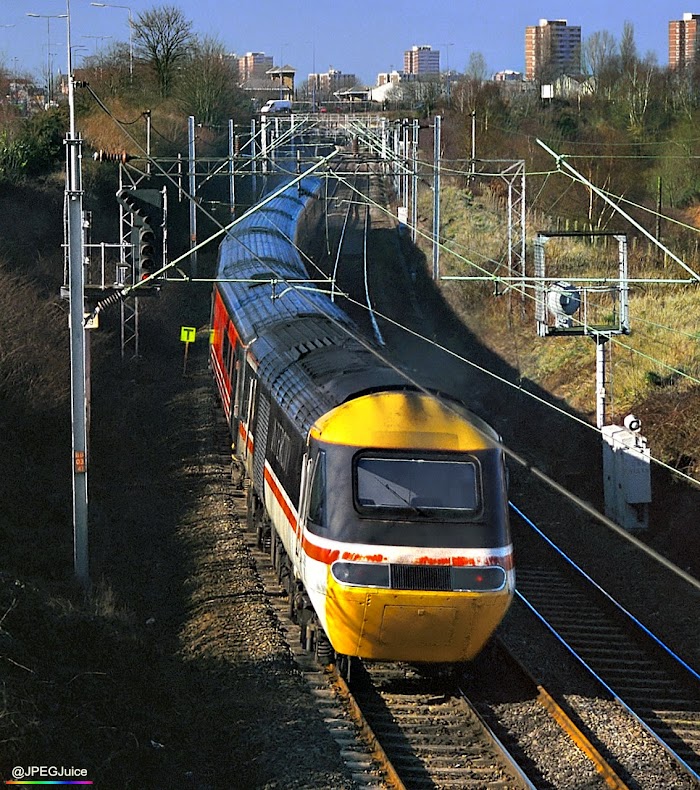
By early 2001, only two original InterCity Class 43 power cars remained - both with Virgin. 43029 and 43166 were on the urgent list for a full repaint, so any sight of either would be met with a swift grasp at the camera and an impromptu photo. Above, that's 43166 at Smethwick on 16th February 2001. I grabbed my last shot of it in InterCity colours three days later, and very soon after that it succumbed to red and charcoal standardisation.

Another sight almost guaranteed to get shutters clicking was that of an EWS Class 86 on a Virgin train. 86261 - seen above at Rabone Lane, Smethwick - was not the only EWS stand-in working the Euston - Wolves services in mid February 2001. 86401 and 86426 were also helping out on the route.

But there was nothing wrong with Virgin's own 86s. Here at Wolverhampton, 86251 The Birmingham Post has reached journey's end and is taking a rest at Platform 2. Before heading back to Euston it will haul the stock north out of the station, and then return on its departure platform - Platform 3.
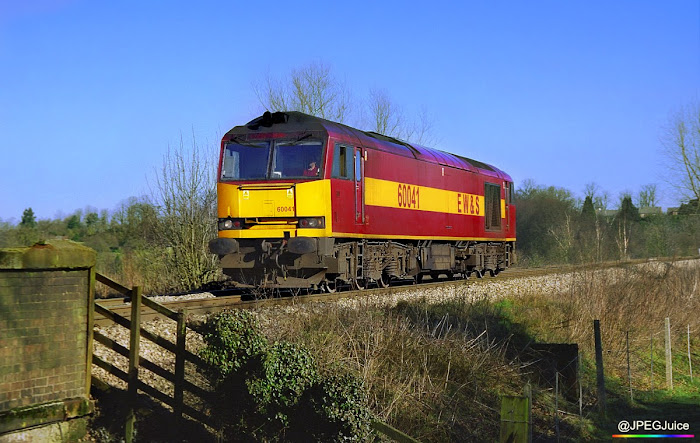
Just time for a quick trip back to the Lickey Incline, for a reminder of the era's scheduled banking power. Class 60s were the default Lickey bankers in 2001, and here on 14th February we cop a good study of the day's dispatch from Saltley - 60041 - at Vigo.
Although by February 2001 things were a far cry from what they'd been in the summer of '98, they were also a far cry from what they would become over the next two years. Even the most common sights - sights we'd taken for granted for years - would be gone by the middle of the decade. We tend to focus on what we've lost, and that feeling was fairly acute through the winter of 2001 in the newfound absence of the 'Tractor'-hauled Holyheads, the 309 units and 310 units, and the Class 47-hauled mail trains. But as this post illustrates, we shouldn't let the losses blind us to what we've still got.
